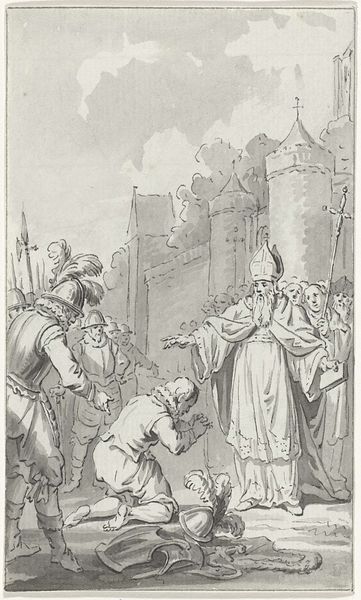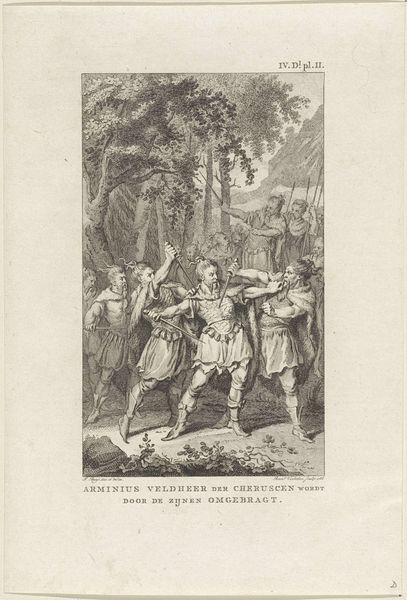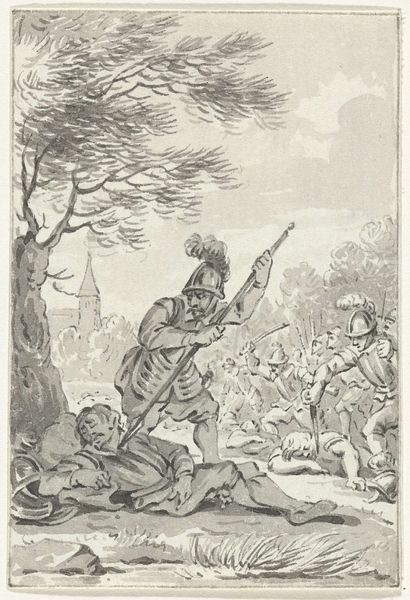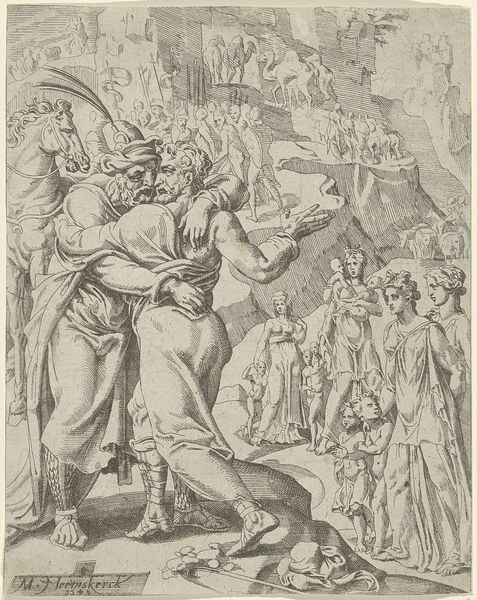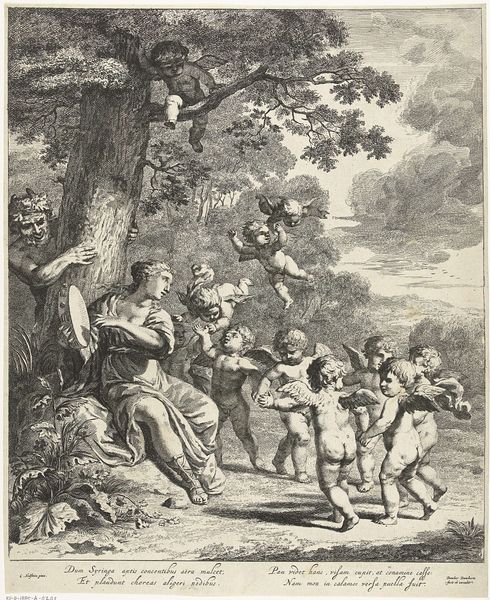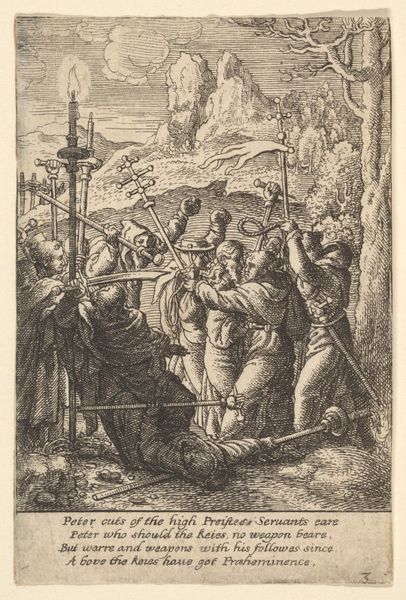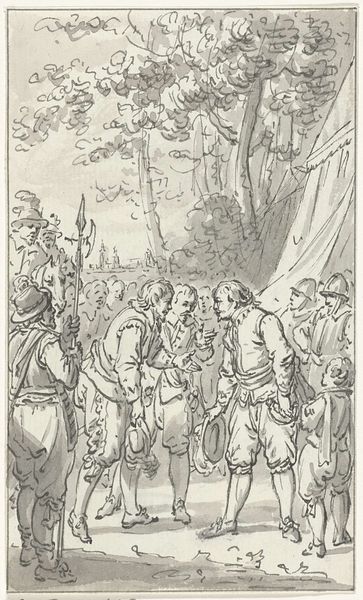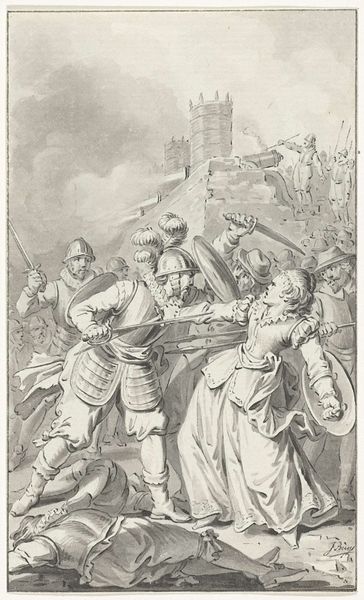
Dimensions: height 148 mm, width 90 mm
Copyright: Rijks Museum: Open Domain
Curator: Let's delve into this pen and ink drawing by Jacobus Buys, created between 1779 and 1784. It’s entitled "Moord op de Germaanse veldheer Arminius, 19"— "The Murder of the Germanic Chieftain Arminius, 9 AD." Editor: Visually, I’m immediately struck by the intense, almost chaotic energy. There's a real sense of claustrophobia created by the tight grouping of figures in this forest clearing. Curator: Absolutely. Buys's handling of line is key here. Notice how the rapid, almost frantic strokes build both form and texture, creating a dynamic composition. Consider the placement of Arminius at the very center. Editor: The choice of Arminius as a subject speaks volumes about the period. Here we see the construction of Germanic identity in the late 18th century, where Arminius served as a potent symbol of resistance against Roman imperial power. It romanticizes and celebrates indigenous defiance. Curator: A potent symbol indeed. Technically, observe how the artist directs our gaze with that central figure under attack and the repetition of triangular shapes—the upraised arms and weapons and tree trunks – echoing each other and generating compositional rhythm. Editor: But is that romanticism necessarily a truthful representation? These narratives of heroic resistance often elide the complexities of power within the resisting group itself, failing to recognize that figures like Arminius were often products of deeply stratified societies. These romanticized histories of nationalism obscure realities of local hierarchy. Curator: While your point regarding power structures is valid, consider how Buys renders a key historical event with an artistic refinement that mirrors classic history paintings, a high art form, if you will, through careful manipulation of pen and ink washes that modulate tonal variations. Editor: I can’t help but feel unsettled, though, viewing the drawing through a post-colonial lens. The "noble savage" trope is undeniably present. While appearing to critique external oppression, this celebration runs the risk of reaffirming stereotypical characterizations of "otherness." The artwork reproduces dangerous historical tropes. Curator: I acknowledge your unease but maintain we can still learn a lot by looking at the dynamism and balance in its staging, how he contrasts textures through varying pressure of the pen. It really embodies a moment in the evolution of drawing and rendering historical events. Editor: Despite my critical concerns, the act of revisiting these artworks remains essential. It helps reveal just how intertwined our present understandings are with past projections and cultural framings. Curator: Agreed. And studying the pure, almost raw aesthetic structure exposes how visual composition drives symbolic meanings. A potent combination of skill and visual tension in this piece.
Comments
No comments
Be the first to comment and join the conversation on the ultimate creative platform.

